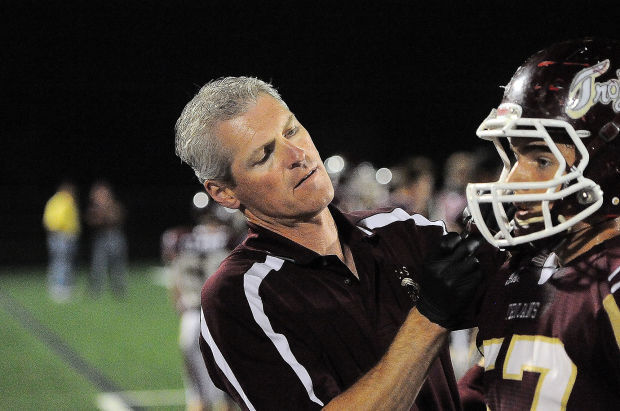
Article reposted from NWI.com
Author:
As certified athletic trainers with three kids in sports who have all experienced concussions, Chesterton’s Bernie and Kim Stento have a dual perspective on a subject that’s become much more prevalent at each level of play.
“Every week, you hear something. Bo Jackson or some former player is coming out saying they’re not going to let their kids play (football), knowing what they know now,” Bernie Stento said. “It’s something Kim and I have talked about quite often. We understand both sides. We deal with both sides. We talk to parents, people who have a fear and it’s not just football. There’s a risk in most sports.”
Stento’s response? Take it seriously, but don’t press the panic button.
“Football is not this horrible, evil thing,” he said. “We feel there’s a great benefit to playing. You hear really scary things in the news, but there are thousands who have recovered when it’s handled properly. You never hear about all the kids who continue their careers and go on to become doctors or lawyers. Despite all the negative things, you shouldn’t take one person’s perspective and make it the rule for everybody in the sport.”
Much of the discussion has centered around Chronic Traumatic Encephalopathy, the cumulative effects of hits to the head over the course of many years. While this by and large applies to the small percentage of those who have gone on to play beyond high school, it’s raised concerns about the safety of youth football. The Stentos’ youngest, Luke, plays Pop Warner and wrestles among a myriad of sports. Of the kids’ three concussions, two were not sustained in football.
“Luke loves football,” Stento said. “He’s good at it. He’s into it. It would be hard for us to say you can’t play. We’ve talked to him and his coaches about proper (tackling) technique, using your shoulder, minimizing (head) contact, to make sure he’s protected. There’s talk about using more padding. There are a lot of avenues to keep the sport safer at the younger levels.”
In high school, there’s been a marked reduction in the amount of contact allowed before and during the season. All coaches are required to be trained on the subject of concussions. All 50 states have concussion safety laws. Ivy League football coaches voted this spring to eliminate all full-contact hitting from regular-season practices, the most significant action taken to address brain trauma in the sport.
“We’re in a transition period where we’re getting out of the old way of doing things,” Stento said.
At Chesterton, any athlete, in football or other sports who sustains a head injury has to go through a four-step process before they are allowed to return to activity. Stento said no Chesterton student who has gone through it this school year has had residual effects.
“How we handle it now is so much better,” he said. “We’ve gotten out of the old way of doing things. There’s better awareness. Checks and balances are in place to ensure we’re doing things appropriately, in the best interests of the kids, and we’re going to learn more as we go on.”
While Stento said he hasn’t had a lot of parents seek him out, he wants anyone with questions or concerns to know his door is open.
“Learn the facts. Get educated,” he said. “There are inherent risks involved but understand we do take care of your kids. Ultimately, the family has to weigh things personally and make that decision if they want their child to play.”
As to the future of football at the various levels?
“I don’t have a crystal ball to say I know what’s going to go on in the next 15 years,” Stento said. “I don’t see it football going away any time in the immediate future.”